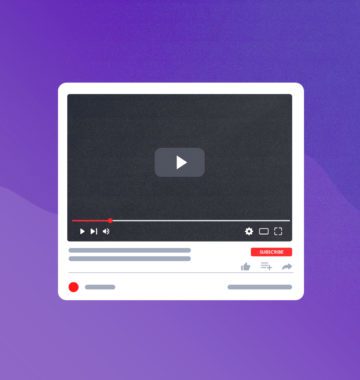In today’s vast and competitive global business arena, having a great product or service isn’t enough to guarantee success.
With a huge boom in new companies launching since the pandemic, and modern consumers demanding increasingly personalized and instant experiences from every brand, driving website visitors from the awareness stage through to conversion is extremely tough for many small businesses.
If you’ve exhausted yourself developing a quality offering but you’re just not seeing conversions, it may be time to review your tech stack and consider how much your tools are actually doing for you.
In this post, we’ll look at nine of our favourite industry tools that will help you optimize and improve your marketing funnel. You will find some great SaaS options here to elevate your digital marketing and drive sales.
Post Contents
What are the marketing funnel stages?
There are varying interpretations of the marketing funnel. For the purposes of this article, we’ll be talking about these funnel stages: awareness, consideration, and conversion.
To help target each of these stages and the marketing funnel as a whole, we will cover tools to help with the following :
- Strategy (whole funnel)
- Audience Research (awareness)
- Engagement and Insight (consideration)
- Analysis (conversion)
- Automation (whole funnel)
Strategy
1. Funnelytics
Building a top-level funnel that shows the basic stages of your customer journey is easy enough, but creating a model that gives you a detailed view of how your full funnel is performing is essential when you’re working to ensure it’s performing at its best.
Funnelytics allows you to build a highly-detailed funnel visualisation from a wide selection of templates, then gradually develop them to suit your needs. From there, you can connect the software with your website and integrate your core data sources, allowing you to map your customer journeys through each stage of the funnel and keep an eye on your most integral metrics.
This kind of information is vital for an effective content strategy, so you can develop the best content for each stage of the funnel, test it, tweak it, and continue to improve.
Funnelytics will also draw insights based on your preferences, enabling you to quickly and easily prioritize your most important next steps and enjoy greater clarity on how your optimizations will improve the success of your funnel.
2. Funnelflows
A slightly more stripped-down visualisation tool, Funnelflows is a user-friendly flowchart tool designed specifically for marketing funnels.
With more than 200 unique elements, the straightforward interface has everything you need to build a simple framework for your marketing funnel, then develop it into a much more detailed and specific map of your customer journeys.
One of the best things about Funnelflows is its layered funnels feature, which enables you to tether the more detailed graphics and data to different stages of your funnel, then view it quickly by simply clicking on the funnel element that acts as its ‘parent’ content.
This will not only make navigating and understanding complex funnels easier, but will also be a big help when you’re presenting marketing strategies to stakeholders, and explaining the nuances of individual stages in the customer journey as they relate to your marketing efforts.
Audience Research
3. Outbase
Made to simplify the top-of-funnel challenges faced by B2B brands, Outbase is a prospecting platform with a wealth of features to help you gain a better understanding of how your sales are performing, and where things could be improved.
With a rich dataset covering a wide array of markets and demographics, this tool enables you to zoom in on your top-level audience, segment them for cleverly-targeted campaigns, and test out your ad messaging according to campaigns, contacts, and industries.
Though much of the tool is tailored towards email sales teams, the selection of exceptionally granular analysis features will be a huge boon to your marketing capabilities, and help you towards a keener understanding of how the activities at the top of your funnel affect the performance throughout the rest of your customer journeys.
4. Snitcher
Many experienced marketers understand the value of having a granular view of the mid-to-low stages of the marketing funnel, but data from that earlier period where your site is first discovered can often fall by the wayside.
Snitcher is a tool that combines with your Google Analytics account to look into your visitors’ past activity, retroactively investigating the people who visited your site, the channel they used to find it, and the kinds of actions they carried out once they visited your site.
With this high-res picture of your audience’s behaviour spanning from when they were totally unknown to you all the way to the checkout or book-a-demo step, you’ll have a great ability to segment the people who interact with your brand, understand their intentions and needs, and adjust your marketing funnel to better suit them.
A word of warning for this tool: though you’ll be able to glean a lot of handy data from your retroactive analysis, it’s important not to get too pushy with your messaging in those early stages when your audience is just window shopping. Make sure that you’re still respecting their current funnel stage, and gently guiding them forward one step at a time.
Engagement and Insight
5. Typeform
Though it may not be considered a go-to channel in many teams, interactive content is quickly gaining traction as a powerful lead generation tool.
Typeform allows you to spruce up traditional lead generation forms with stunning, colourful graphics, and encourage more activity from your top-of-funnel touchpoints. The potential applications don’t stop there though.
Typeform users can experiment with lead-generation tactics through the use of quizzes, polls, surveys, and tests, all created through a user-friendly editor. With seamless integrations on popular apps such as Slack, HubSpot, and Mailchimp, the creations you make in Typeform can be easily brought into existing marketing activities from day one.
6. Wishpond
Wishpond is a social promotion tool that runs in the same vein as Typeform, giving you immediate access to a wide variety of social media promotions you can use to increase audience engagement and harvest essential data.
The tool comes with templates for setting up a variety of UGC-based social media promotions, including photo contests, caption contests, sweepstakes, and polls, letting you experiment and trial various pieces of content to develop a social media lead-gen strategy that works for you.
The Wishpond platform has a huge range of other features to check out, including marketing automation, payment processing, and appointment scheduling, all supported by an in-house team that will allow you to tap into expert knowledge and give you a greater level of flexibility.
Analysis
7. Hotjar
One of the best tools out there for getting a complete view of your customer’s journeys, Hotjar uses behavioural heatmaps, session recordings, surveys, and more to help you get a better all-around understanding of what your customers do after landing on your site.
This tool will be especially useful if you feel you have your top of funnel activity in order but you’re just not seeing conversions, as Hotjar is specifically geared towards those middle-of-funnel moments where a site visitor seems close to converting, but then suddenly drops off.
With a clear vision of how every session plays out on your site, and a deeper funnel analysis that will highlight what’s keeping your leads from moving onto the next stage, your CRO and UX work will quickly become far more effective at getting interested site visitors over the line.
Automation
8. Mailchimp
Intuit Mailchimp, once a simple email marketing suite, now offers a wealth of fantastically innovative automation tools, all geared towards showing the right messaging to your leads based on the data they generate.
This hugely popular tool allows you to build custom purchase paths based on the nuances of your marketing funnel, and set parameters based on your customers’ demographic data, the touchpoints they use to interact with your brand, and other metrics. This helps you to action your marketing emails and other communications at precisely the right moment.
Your emails can also be automated to include products or content based on a specific site visitor’s browsing habits, significantly improving your chances of earning a conversion.
Mailchimp also has a retargeting tool, allowing you to design, strategise, and display ads on popular platforms like Facebook, Instagram, and Twitter, focusing on the people who have previously interacted with your content and just need a little reminder to complete their journey.
Though fairly high-end and a little pricey for some startups, Mailchimp’s highly intuitive interface and huge arsenal of features makes it one of the best marketing tools on the current market.
9. REVE Chat
Finally, REVE Chat gives you a hands-free solution to catching many of the leads that can drop out near the bottom of your marketing funnel.
This AI tool allows you to quickly and easily set up omni-channel chatbots representing your brand, providing 24/7 availability, instantaneous replies to contact queries, and consistently on-brand answers, which will help reduce abandoned carts or exits stemming from the need for instant, decision-making answers.
Aside from having a traditional chatbot on your site, REVE Chat offers integrations with Whatsapp Business, Facebook, and Telegram, with more planned for the future.
We know that the conversational AI behind modern chatbots has a ways to go, and the interactions they have with your site visitors won’t always measure up to the standards of service from your real team.
But maintaining chatbots across your most active channels, poised to answer common queries made by your ideal customers, can often mean the difference between a visitor becoming a hot lead or bouncing over to a competitor’s site.
Final Thoughts…
Effective funnel optimization is a broad and complex subject, requiring both solid fundamentals and a keen ability to recognise the tech that will take your funnel to the next level.
Though there’s a long road ahead, we hope this guide has helped you make more sense of your marketing funnel, and plan how to develop it in the right direction.





